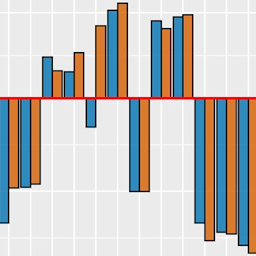Retrospective analysis of dermal absorption triple pack data
Main Article Content
Abstract
Dermal toxicity is driven by the ability of a substance to penetrate the skin. The “triple pack” approach, which combines in vivo rat, in vitro rat, and in vitro human data, is used to calculate an estimated human dermal absorption factor (DAF). To assess the feasibility of deriving a DAF using only in vitro data, we retrospectively evaluated agrochemical formulations to compare the DAF derived from each individual method to the DAF generated from the triple pack approach. For most of the formulations evaluated, the in vitro rat method generated a similar or higher DAF value than the in vivo method. Absorption through in vitro human skin was similar to or less than that observed in rat skin for all formulations. For most of the formulations, the human in vitro method provided a similar or higher estimate of dermal absorption than the triple pack approach. For human health risk assessment, in vitro assays using human skin would be preferable, as they would be directly relevant to the species of interest and avoid overestimation of dermal absorption using rat models. However, rat in vitro studies would still have utility in the absence of human in vitro data. In vitro rat data provide estimates of dermal absorption that are at least as protective as in vivo rat data and thus could also be considered adequate for use in establishing DAFs. The comparisons presented support potentially using in vitro data alone for DAF derivation for human health risk assessment of pesticides.
Article Details

This work is licensed under a Creative Commons Attribution 4.0 International License.
Articles are distributed under the terms of the Creative Commons Attribution 4.0 International license (http://creativecommons.org/licenses/by/4.0/), which permits unrestricted use, distribution and reproduction in any medium, provided the original work is appropriately cited (CC-BY). Copyright on any article in ALTEX is retained by the author(s).
Bronaugh, R. L., Stewart, R. F. and Congdon, E. R. (1982). Methods for in vitro percutaneous absorption studies. II. Animal models for human skin. Toxocol Appl Pharmacol 62, 481-488. doi:10.1016/0041-008x(82)90148-x
EFSA – European Food Safety Authority, Buist, H., Craig, P. et al. (2017). Guidance on dermal absorption. EFSA J 15, e4873. doi:10.2903/j.efsa.2017.4873
EPA (1998). Health Effects Test Guidelines: OCSPP 870.7600 – Dermal Penetration (No. EPA 712-C-98-350). Washington, D.C., U.S. Environmental Protection Agency. https://regulations.gov/document?D=EPA-HQ-OPPT-2009-0156-0048
Hopf, N. B., Champmartin, C., Schenk, L. et al. (2020). Reflections on the OECD guidelines for in vitro skin absorption studies. Regul Toxicol Pharmacol 117, 104752. doi:10.1016/j.yrtph.2020.104752
NAFTA (2008). Dermal Absorption Group Position Paper on Use of In Vitro Dermal Absorption Data in Risk Assessment. North American Free Trade Agreement Dermal Absorption Working Group. Pp. 1-3. Unpublished; available upon request.
OECD (2004a). Test No. 427: Skin Absorption: In Vivo Method. OECD Guidelines for the Testing of Chemicals, Section 4: Health Effects. OECD Publishing, Paris. doi:10.1787/9789264071063-en
OECD (2004b). Test No. 428: Skin Absorption: In Vitro Method. OECD Guidelines for the Testing of Chemicals, Section 4: Health Effects. OECD Publishing, Paris. doi:10.1787/9789264071087-en
OECD (2011). Guidance Notes on Dermal Absorption. Series on Testing and Assessment, No. 156. OECD Publishing, Paris. http://www.oecd.org/env/ehs/testing/48532204.pdf
Sullivan, K. M., Aggarwal, M., Akins, J. M. et al. (2017). Dermal absorption for pesticide health risk assessment: Harmonization of study design and data reporting for North American regulatory submissions. Regul Toxicol Pharmacol 90, 197-205. doi:10.1016/j.yrtph.2017.09.012
van Ravenzwaay, B. and Leibold, E. (2004). A comparison between in vitro rat and human and in vivo rat skin absorption studies. Hum Exp Toxicol 23, 421-430. doi:10.1191/0960327104ht471oa


